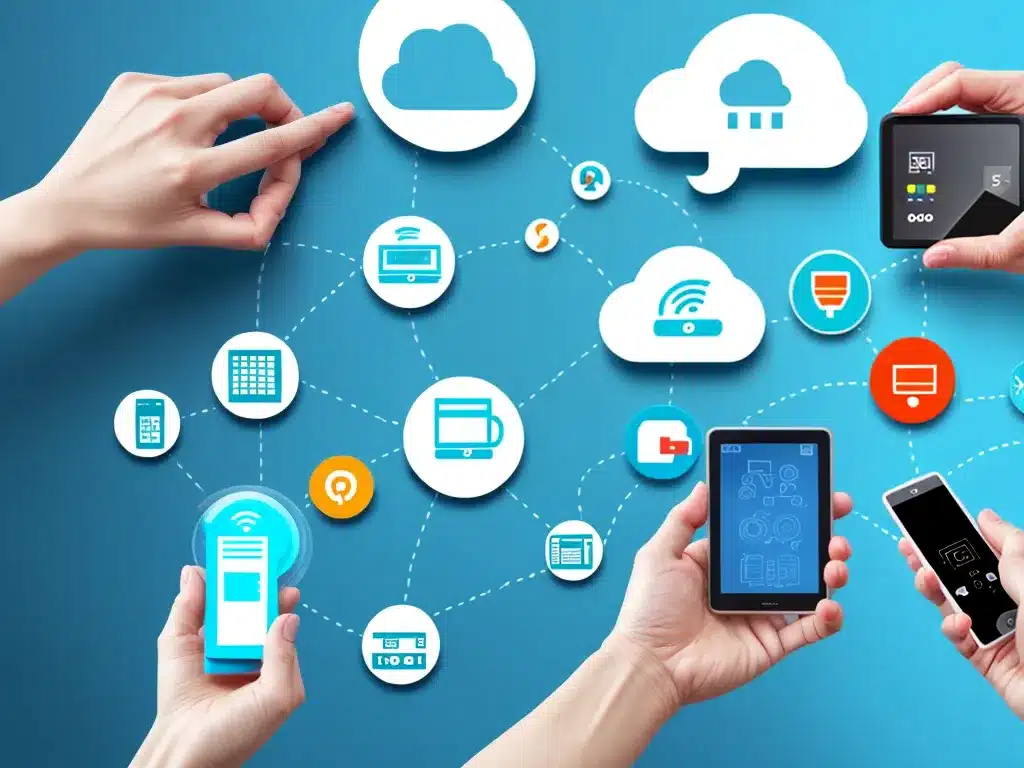
How IoT is Reinventing Consumer Products in 2024
Introduction
The Internet of Things (IoT) is transforming consumer products in profound ways. By integrating sensors and internet connectivity into everyday items, companies are creating innovative new products that offer advanced features, greater convenience, and new capabilities that were unimaginable just a few years ago. As we enter 2024, IoT is poised to reinvent entire product categories and change how consumers interact with the objects in their daily lives.
In this article, I will provide an in-depth look at how IoT is reinventing consumer products. I will cover key trends, real-world examples, and an outlook on what the future may hold as IoT reshapes the consumer landscape over the next few years.
Connected Appliances
One major area where IoT is having a significant impact is home appliances. Refrigerators, washing machines, ovens and other appliances are being integrated with wifi connectivity and sensors to add “smart” functionality.
For example, connected refrigerators can now track the contents inside. Using internal cameras and sensors, they can identify when certain foods are running low and automatically compile a shopping list. Some models even suggest recipes based on the ingredients you have on hand. This brings new levels of convenience to meal planning and grocery shopping.
Meanwhile, IoT washing machines can monitor how dirty clothes are and automatically select the optimal wash settings. IoT dryers can sense moisture levels and avoid over-drying. And IoT ovens can assist with cooking by setting the precise temperature and cook times for recipes.
By 2024, the majority of new appliances will come equipped with smart capabilities powered by IoT integration. They will be more energy efficient, easier to use, and offer new ways to simplify household chores.
Wearable Technology
Wearable tech has exploded in popularity over the last decade. And by 2024, the capabilities of smart watches, fitness trackers, and other wearables will have advanced even further thanks to IoT.
With integrated sensors that can monitor things like heart rate, perspiration levels, and body temperature, wearables will provide users with deeper health insights. Users will be able to share this biometric data with doctors for more personalized care. Athletes and fitness enthusiasts will use wearables to optimize workouts. And wearable medical devices will be able to automatically deliver medications, insulin, or oxygen as needed.
IoT will also expand the capabilities of hearables – smart earbuds, headphones, and hearing aids. They will integrate with virtual assistants to deliver information on-the-go. Noise cancellation and ambient listening modes will improve based on data from sound sensors. And audio will automatically adjust to customize the listening experience.
Overall, wearables and hearables will become far more intelligent, practical, and useful thanks to IoT integration.
Smart Furniture & Home Items
Beyond just appliances, IoT will bring connectivity and intelligence to many common furniture items and other home products.
Beds will track sleep patterns, adjust firmness, and wake you at optimal times. Desks will be able to reshape themselves at the press of a button, going from standing height to sitting. Lighting will automatically dim or brighten based on time of day and room occupancy to save energy.
Other examples include mirrors that display weather, news and schedule updates; pets feeders that portion out food and notify owners when they are empty; and kids toys like IoT-enabled LEGO sets that combine physical bricks with interactive digital play.
Smart Cities
On a larger scale, IoT deployment will transform urban infrastructure through the rise of smart cities. In 2024, we will see more smart city projects come online.
Networks of IoT sensors will monitor things like air quality, noise pollution, traffic flow, and structural integrity of buildings and bridges in real-time. This data will allow city planners to identify problems and make data-driven decisions to improve efficiency and sustainability.
Smart lighting and automated systems will reduce energy usage across the city. Integrated public transportation will allow urban dwellers to easily move around without needing a car. And hyperlocal weather mapping will enable quick responses to adverse weather events like flash flooding.
Challenges to Address
While the benefits will be substantial, there are also challenges to address with widespread IoT consumer adoption.
Data privacy and security is a major concern. There will need to be safeguards to prevent hacking of sensitive user data collected by these devices. Manufacturers must be transparent about data collection and allow users more control over their personal data.
There are also technical challenges around compatibility, seamless integration, and overcoming connectivity issues. Creating common standards will help ensure different products work smoothly together in people’s homes and cities.
Finally, sustainability is crucial. IoT devices must be designed efficiently to minimize electronic waste as older models are replaced. Using low powered components and renewable energy will be important for reducing the overall environmental impact.
The Future with IoT
Within the next few years, IoT will bring once-fictional technologies straight out of science fiction into our real lives. As more everyday objects become intelligent and connected, we will interact with our living spaces, vehicles, and possessions in unprecedented ways.
While the full implications remain to be seen, it is clear that IoT is catalyzing a consumer revolution. From how we cook and clean to how we work and take care of our health, IoT promises a future where technology seamlessly fades into our surroundings and makes our lives more comfortable, convenient and efficient. After transforming consumer electronics, IoT innovations will spread to reinvent nearly every product category we know.












